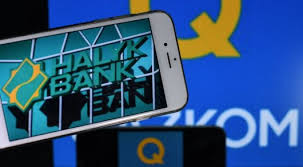 Kazakhstan’s Halyk Bank may have to inject at least 230 billion tenge ($738 million) into Kazkommertsbank, the troubled lender it’s set to buy for less than $1 after a state bailout, according to two people with knowledge of the matter.
Kazakhstan’s Halyk Bank may have to inject at least 230 billion tenge ($738 million) into Kazkommertsbank, the troubled lender it’s set to buy for less than $1 after a state bailout, according to two people with knowledge of the matter.
The cash, coming after the government stumps up 2.4 trillion tenge to shift off Kazkommertsbank’s balance sheet its loans to BTA Bank, would enable the lender to keep operating, the people said, asking not to be identified given the sensitivity of the matter.
The Kazakh government is undertaking its biggest bank rescue since the global financial crisis led to $20 billion in debt restructuring by lenders in the Central Asian nation. Halyk said last month there is an “80 percent chance” of reaching a deal to buy Kazkommertsbank after President Nursultan Nazarbayev, the longest-serving leader in the former Soviet Union, sanctioned a bailout.
Halyk Bank’s press service declined to comment by email. Kazkommertsbank didn’t reply to phone or emailed requests for comment.
Fitch Ratings placed Halyk on negative outlook last month, saying Kazkommertsbank’s problem assets may not be adequately provisioned. Halyk Chief Executive Officer Umut Shayakhmetova said in March that the bank, controlled by Nazarbayev’s daughter Dinara and son-in-law Timur Kulibayev, needed one to two months to calculate the size of the necessary capital injection into Kazkommertsbank.
Kazkommertsbank’s buyer won’t get “a free deal,” and its current shareholders may not receive any money, central bank Deputy Governor Oleg Smolyakov told reporters in March. The bailout money will be used to buy assets backing 2.4 trillion tenge of loans that Kazkommertsbank gave the twice-defaulted BTA Bank when it took the lender off the state’s hands in 2014.
Kazkommertsbank majority shareholder Kenges Rakishev, the son-in-law of a former Kazakh deputy prime minister who’s now the country’s ambassador to Russia, and Nurzhan Subkhanberdin, also a stakeholder, control BTA separately. In 2015, the lender added its troubled loans to BTA’s.
Source article: www.bloomberg.com, 24.04.2017




